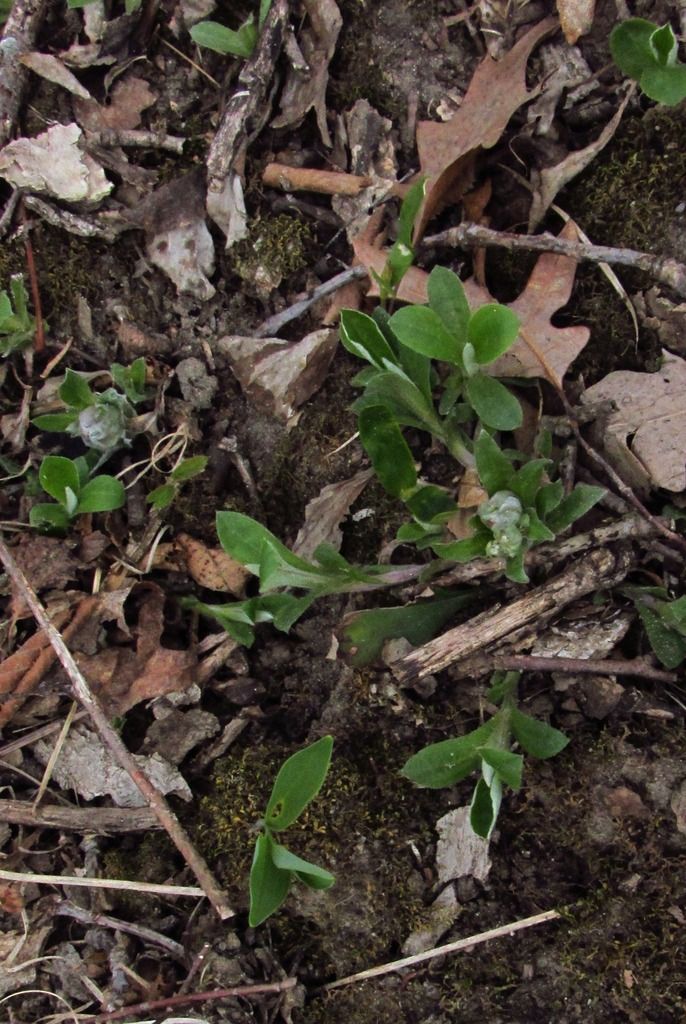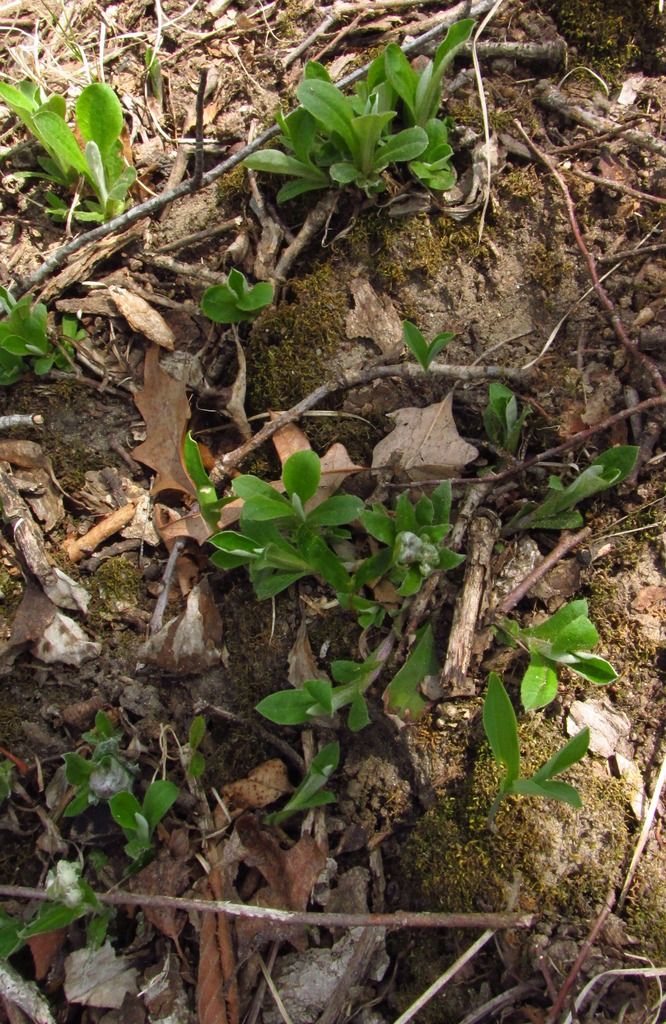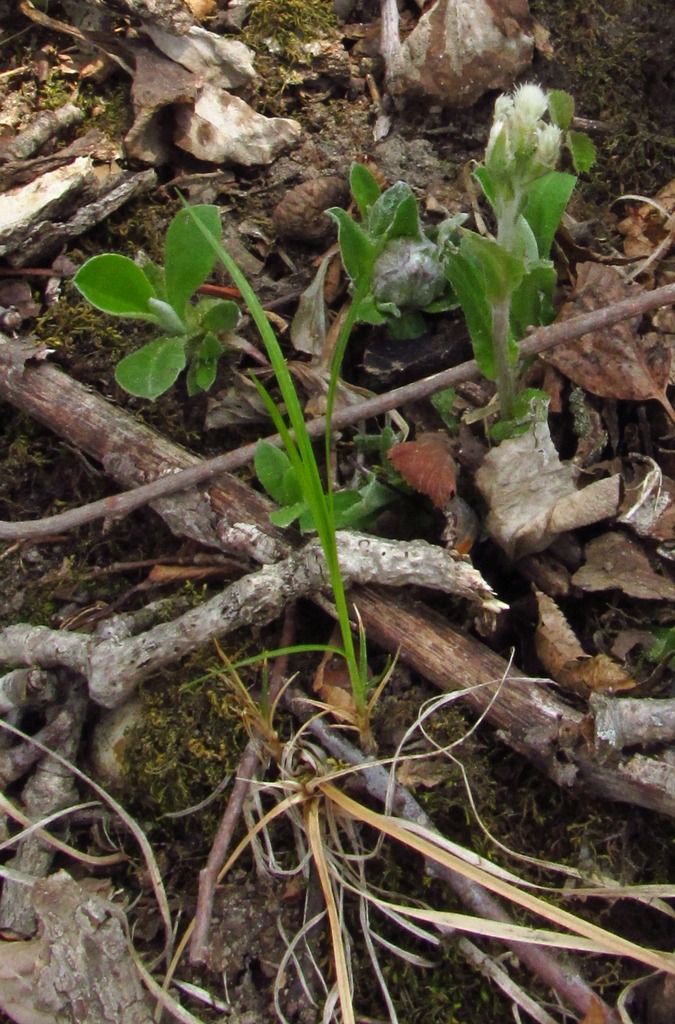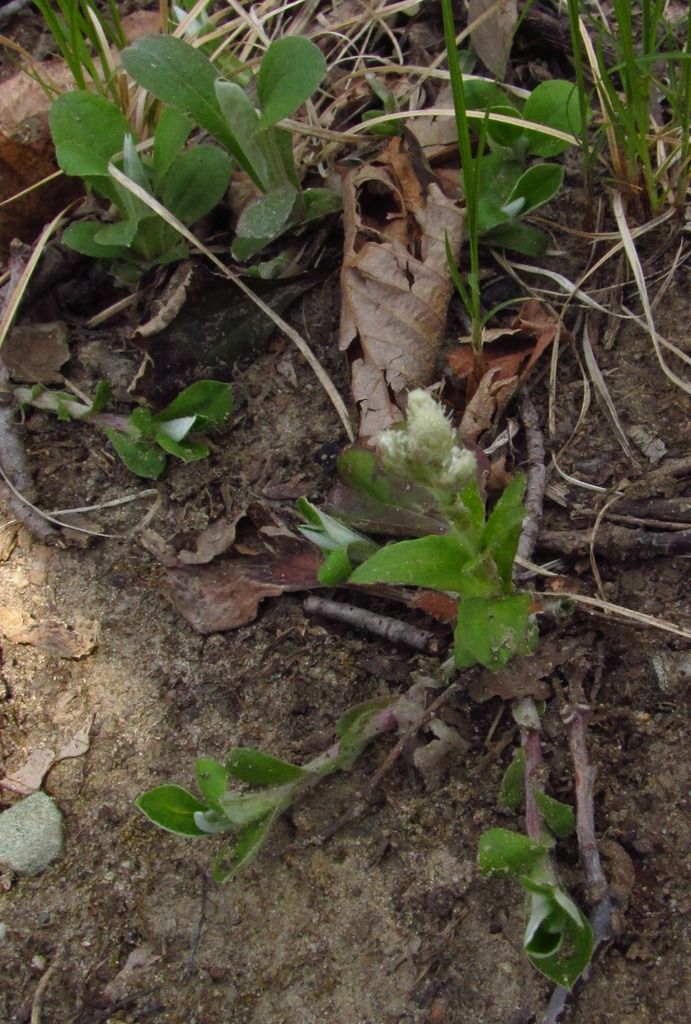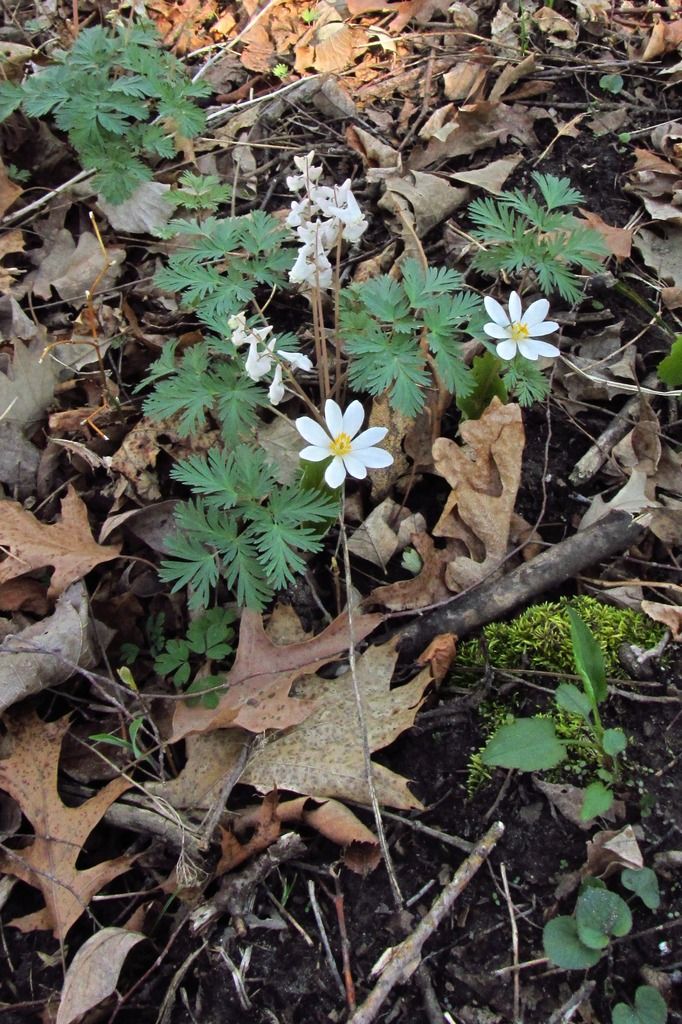Warmer weather and spring rains have caused woodland wildflowers to explode all over Iowa lately. This past week, I saw the first blossoms of sweet William (blue phlox), sweet cicely, and littleleaf crowfoot or buttercup.
I was fortunate to visit the Ledges State Park in Boone County recently with naturalist and photographer Eileen Miller. We saw carpet-like stands of spring beauty, bloodroot, and Dutchman’s breeches. Eileen also noticed a much less showy native plant, which I had never seen (or at least not been aware of seeing) outside books.
After the jump I enclose several pictures of pussytoes in bloom. The plants are native to most of North America. They are so unobtrusive that I would have walked right past them if Eileen had not pointed them out.
As a bonus, I included a photo of bloodroot and Dutchman’s breeches blooming together at the end of this post.
To my knowledge, these photos depict plantain-leaved pussytoes rather than field pussytoes, which often grow in prairie habitats, rather than in wooded areas like where we found these plants.
Plaintain-leaved pussytoes rarely grow taller than six inches, and the flowerheads may be only a quarter-inch across. The foliage doesn’t look like anything special:
According to the Illinois Wildflowers website, plaintain-leaved pussytoes “often flourishes in poor soil that contains sand, rocky material, or clay.” In Wildflowers of Iowa Woodlands, Sylvan Runkel and Alvin Bull write that in poor dry soil habitats, the plant “serves an important function of reducing erosion by holding soil in place with its extensive root system.”
According to Runkel and Bull, pussytoes typically blooms from April to June in Iowa. You need to be close to the ground to get a good look at the flowerheads.
Walking along the Lost Lake Nature Trail at the Ledges State Park last week, we saw huge numbers of bloodroot and Dutchman’s breeches, often growing side by side. Here’s a small cluster:

